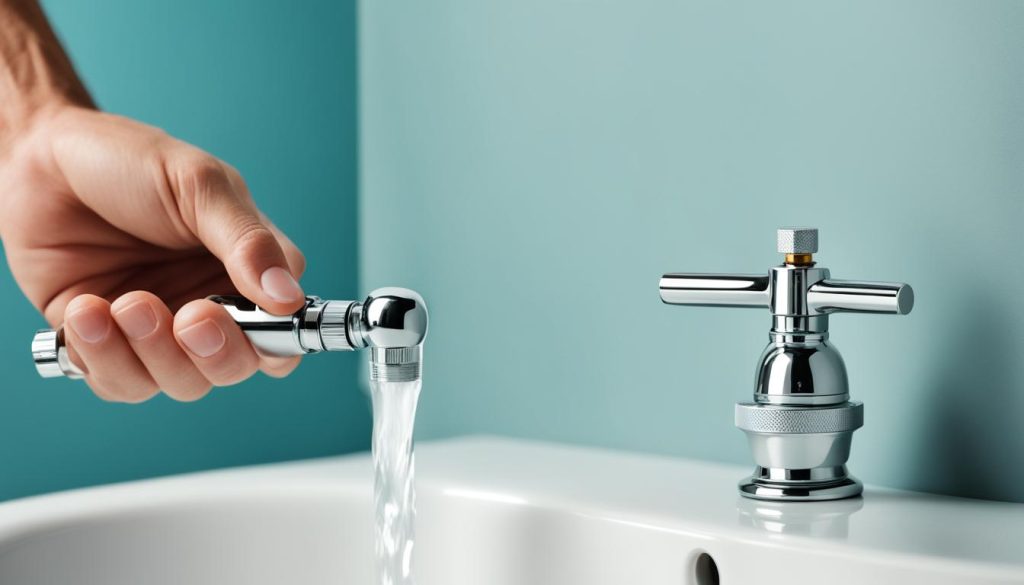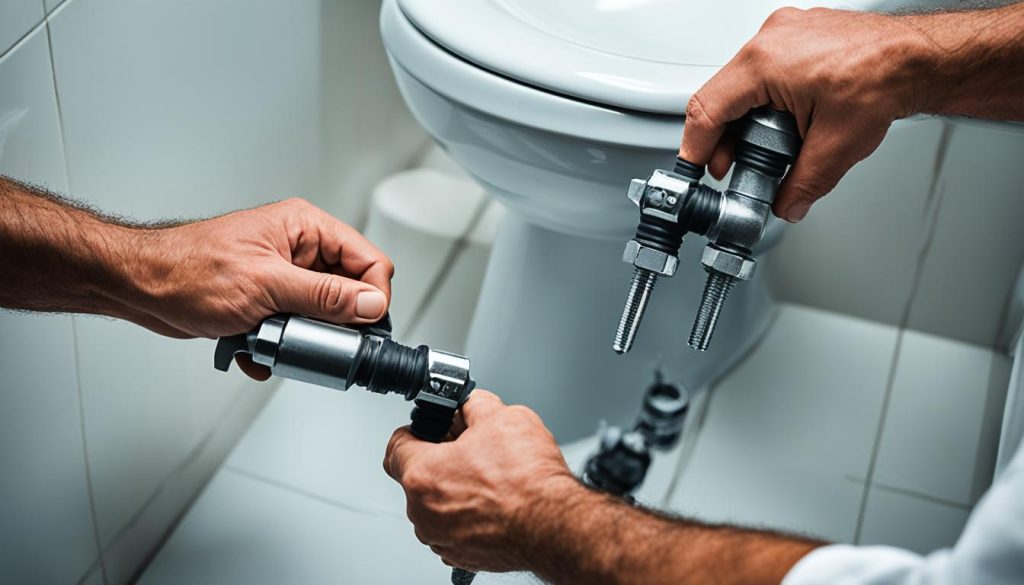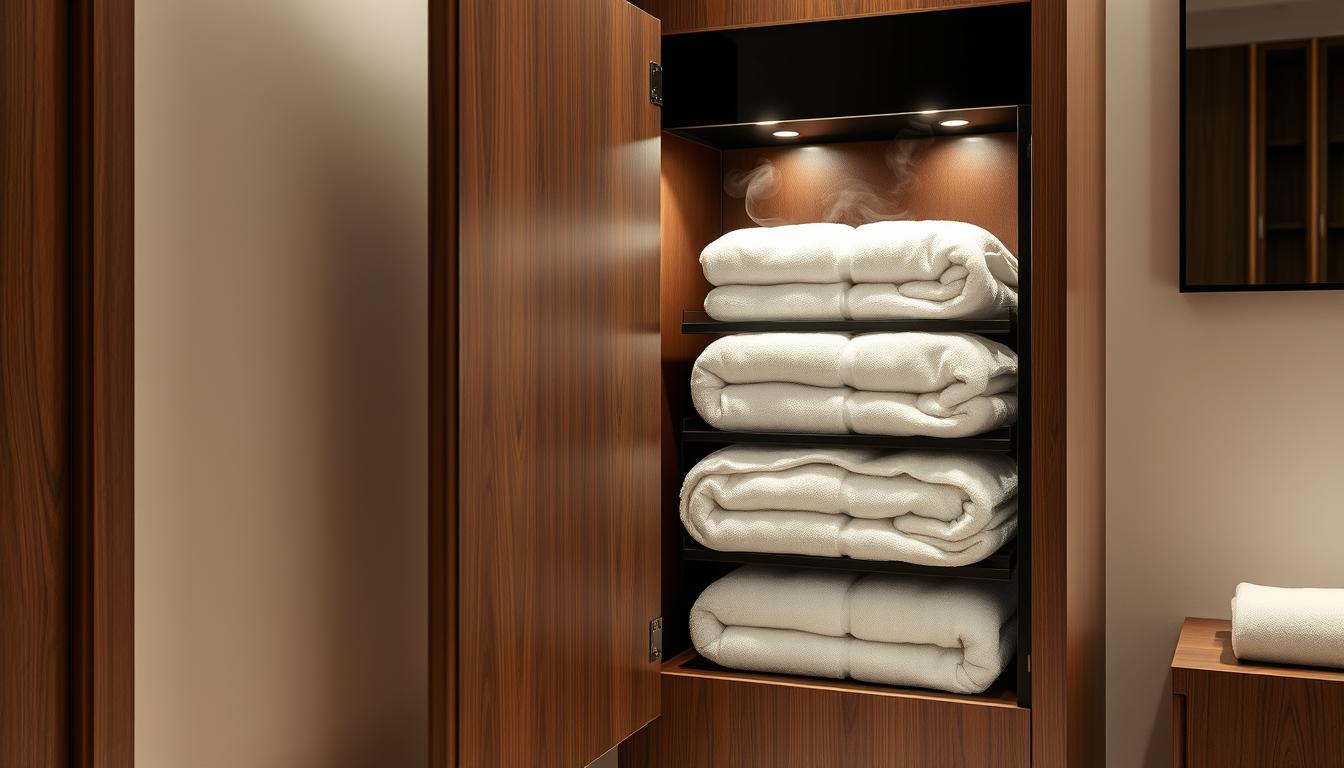Removing a bidet may seem like a daunting task, but with the right knowledge and tools, it can be a straightforward process. Whether you’re renovating your bathroom or simply no longer need a bidet, this guide will provide you with the necessary steps to successfully remove a bidet.
Key Takeaways:
- Removing a bidet requires the right tools and materials, such as an adjustable wrench, screwdriver, pliers, pipe wrench, bucket or towel, plumbers tape, and cleaning supplies.
- Follow a step-by-step guide to ensure you remove the bidet properly and avoid damaging your bathroom fixtures.
- Consider the advantages and disadvantages of bidet removal, such as increased space in your bathroom, reduced maintenance and repairs, and the potential loss of hygiene benefits.
- Consult professionals if needed and weigh your personal preferences and circumstances before deciding to remove a bidet.
- With the right tools, knowledge, and precautions, bidet removal can be a smooth and successful process.
Why Remove a Bidet?
There are different reasons why you may choose to remove a bidet. Let’s explore some common reasons:
- A lack of space in a small bathroom: Bidets can take up valuable space in a bathroom, especially in smaller homes or apartments. Removing the bidet can help create a more spacious and functional bathroom layout.
- A preference for using traditional toilet paper: Some individuals may prefer using traditional toilet paper over bidets. Whether it’s a personal preference or habit, the removal of the bidet allows for a return to familiar bathroom practices.
- The need for maintenance and repairs: Bidets, like any plumbing fixture, may require periodic maintenance or repairs. Removing the bidet can simplify plumbing tasks and reduce the need for specialized maintenance.
- Bathroom remodeling: If you’re planning a bathroom remodel, removing the bidet can provide flexibility in design options, allowing for a more cohesive look and functional space.
- Environmental concerns: While bidets are often considered eco-friendly due to reduced toilet paper usage, some individuals may have concerns about the water and energy usage associated with bidets. Removing the bidet can align with personal sustainability goals.
Before deciding to remove a bidet, it’s important to weigh the benefits and disadvantages. Consider your specific circumstances and preferences to make an informed decision.
Here’s a quote to consider:
“Removing the bidet allowed me to create a more open and spacious bathroom, and it eliminated the need for costly maintenance. I feel much more in control of my bathroom design now.” – Sarah, homeowner
Tools and Materials Needed
When it comes to bidet removal, having the right tools and materials is essential for a smooth and successful process. Here are the necessary tools and materials you’ll need:
Tools:
- Adjustable wrench
- Screwdriver
- Pliers
- Pipe wrench
Materials:
- Bucket or towel
- Plumbers tape
- Cleaning supplies
With these tools, you’ll have everything you need to effectively remove the bidet and ensure a smooth transition. The adjustable wrench and pliers will help you loosen and disconnect any plumbing connections. The screwdriver will be useful for removing any screws or fasteners holding the bidet in place. The pipe wrench will assist in removing any stubborn fittings. It’s important to have a bucket or towel handy to catch any water or excess debris during the removal process. Additionally, plumbers tape will be required to seal any connections after the bidet is removed. Finally, cleaning supplies will help you clean the area once the bidet is successfully removed.
Having these tools and materials readily available will make bidet removal much easier and ensure that the process goes smoothly from start to finish.
Affiliate Disclosure
This article contains affiliate links, which means we may earn a commission if you make a purchase through the provided links. However, this comes at no additional cost to you. These affiliate links are included to provide you with convenient access to the tools and materials mentioned above. We only recommend products and services that we believe will be helpful and of value to our readers.
Step-by-Step Guide to Removing a Bidet
Removing a bidet may seem overwhelming, but with this step-by-step guide, you can easily navigate the bidet removal process. Follow these instructions to ensure a smooth and successful bidet removal:
- Turn off the water supply: Begin by turning off the water supply valves located behind the bidet. This will prevent any water flow as you proceed with the removal process.
- Disconnect the water supply hose: Using an adjustable wrench, loosen the nut connecting the water supply hose to the bidet. Once loose, gently pull the hose away from the bidet.
- Remove the mounting bolts: Locate the mounting bolts securing the bidet to the floor and remove them using a wrench or screwdriver. Be sure to keep these bolts in a safe place as you may need them for future installations.
- Disconnect the drain connection: If your bidet is connected to a drain, carefully detach the drain pipe using pliers or a pipe wrench. Place a bucket or towel underneath to catch any water that may spill out.
- Detach the bidet from the wall: Depending on the bidet’s installation, there may be screws or brackets securing it to the wall. Remove these fasteners using a screwdriver or wrench.
- Lift and remove the bidet: With all connections and fasteners removed, lift the bidet gently and set it aside. Be cautious of any remaining water or debris that may still be present.
Once the bidet has been successfully removed, you can proceed with any desired bathroom renovations or installations. Dispose of the bidet responsibly or consider donating it if it’s still in good condition.
Example Image of Bidet Removal Process:
| Step | Image |
|---|---|
| 1. Turn off the water supply |  |
| 2. Disconnect the water supply hose | |
| 3. Remove the mounting bolts |  |
| 4. Disconnect the drain connection | |
| 5. Detach the bidet from the wall |  |
| 6. Lift and remove the bidet |
Benefits of Removing a Bidet
Removing a bidet can offer several advantages and benefits. Whether you’re looking to free up space in a small bathroom, reduce maintenance and repair costs, or customize your bathroom to your personal preference, bidet removal can be a practical solution. However, it’s important to carefully consider the potential loss of hygiene benefits before making a final decision.
Advantages of Bidet Removal
Increased Space: By removing a bidet, you can create more space in your bathroom. This can be particularly beneficial for smaller bathrooms or those with limited square footage, allowing for better utilization of the available area.
Reduced Maintenance and Repairs: Bidets require regular maintenance and upkeep. By removing a bidet, you eliminate the need for ongoing maintenance tasks and potential repairs, saving you time and money in the long run.
Cost Savings: Bidet removal can lead to cost savings. Not only do bidets themselves require an initial investment, but there are also ongoing expenses for water and electricity. By removing a bidet, you can reduce these ongoing costs.
Customization: Removing a bidet gives you the freedom to customize your bathroom according to your personal style and preferences. You can explore different design options and installations that better suit your needs and aesthetic vision.
Note: It’s important to note that the benefits mentioned above may vary depending on individual circumstances and preferences.
Considerations for Bidet Removal
“Removing a bidet can provide practical advantages, but it’s essential to consider the potential loss of hygiene benefits that bidets offer.”
Hygiene Benefits: One significant aspect to consider before removing a bidet is the potential loss of cleanliness and hygiene that bidets provide. Bidets offer a more thorough cleaning experience for the genital and anal areas, promoting hygiene and reducing the reliance on toilet paper alone.
Personal Preference: Individual preferences play a crucial role when deciding whether to remove a bidet. Some individuals may find bidets essential for their hygiene routine, while others may prefer traditional toilet paper. Consider your personal preferences and needs when evaluating the benefits and drawbacks of bidet removal.
Consult Professionals: If you are unsure about whether to remove a bidet or need assistance with the process, it’s recommended to consult with professionals such as plumbers or bathroom renovation experts. They can provide valuable insights and guidance tailored to your specific circumstances.

Disadvantages of Removing a Bidet
While there are advantages to removing a bidet, such as increased space and reduced maintenance, there are also disadvantages to consider. One major drawback is the potential loss of cleanliness and hygiene that bidets provide. Bidets thoroughly clean the genital and anal areas, offering a superior level of hygiene compared to toilet paper.
“Bidets are designed to provide gentle and effective cleansing, ensuring a higher level of cleanliness and reducing the risk of infections or irritation,” says Dr. Emily Watson, a renowned dermatologist.
By removing a bidet, you may miss out on these hygiene benefits, which are particularly important for individuals with certain medical conditions, such as hemorrhoids or urinary tract infections. Bidets can help alleviate discomfort and promote better hygiene in these cases.
Increased Reliance on Toilet Paper
Without a bidet, you’ll be relying solely on toilet paper for cleaning yourself after using the restroom. While toilet paper is an acceptable option, it may not provide the same level of cleanliness as a bidet. Bidets use water to wash away residue and bacteria, offering a more thorough cleanse.
Using only toilet paper can lead to potential issues like incomplete cleaning, increased risk of irritation or infection, and a less pleasant overall experience. It’s important to consider your personal hygiene preferences when deciding whether to remove a bidet.
Environmental Impact
Another disadvantage of bidet removal is the environmental impact. Bidets are known for their eco-friendly nature as they reduce the amount of toilet paper used. According to the World Wildlife Fund (WWF), the production and disposal of toilet paper contribute to deforestation and climate change.
“By using bidets, individuals can significantly lower their ecological footprint and contribute to a more sustainable future,” states the WWF in their latest report.
By removing a bidet, you may end up using more toilet paper, which can have a negative impact on the environment. Considering the growing concern for sustainability, this is an aspect worth pondering.
Missed Customization and Convenience
Lastly, removing a bidet means losing out on the customization and convenience it offers. Bidets often come with adjustable water pressure, temperature control, and even additional features like heated seats. These features can enhance personal comfort and convenience during bathroom visits.
While these features may not be essential, they do provide added comfort and enhance the overall bathroom experience. Removing a bidet means giving up these customizable options, which may be an important consideration for some individuals.
Considering these drawbacks, it’s important to carefully weigh the advantages and disadvantages before deciding to remove a bidet. Understanding your personal hygiene needs and preferences, as well as the potential impact on the environment, will help you make an informed decision.
Conclusion
Removing a bidet is a personal decision that depends on individual preferences and circumstances. While bidets offer numerous benefits, such as increased space and reduced maintenance, they may not be suitable for everyone. It’s important to carefully weigh the advantages and disadvantages before making a decision.
Consider your specific needs and requirements when deciding whether to remove a bidet. Consult with professionals if necessary, as they can provide valuable guidance and expertise. With the right tools and knowledge, bidet removal can be a smooth and successful process.
Ultimately, the choice to remove a bidet lies in your hands. Take into account the potential loss of hygiene benefits that bidets provide and weigh it against the advantages and disadvantages. Make an informed decision that best suits your lifestyle and bathroom requirements.
FAQ
How do I remove a bidet?
To remove a bidet, you will need an adjustable wrench, screwdriver, pliers, pipe wrench, bucket or towel, plumbers tape, and cleaning supplies. Follow these step-by-step instructions:
Why would I want to remove a bidet?
There are several reasons why someone may choose to remove a bidet, including a lack of space in a small bathroom, a preference for using traditional toilet paper, the need for maintenance and repairs, bathroom remodeling, and environmental concerns.
What tools and materials do I need to remove a bidet?
To remove a bidet, you will need an adjustable wrench, screwdriver, pliers, pipe wrench, bucket or towel, plumbers tape, and cleaning supplies.
What is the step-by-step process for removing a bidet?
Follow these step-by-step instructions to remove a bidet:
What are the benefits of removing a bidet?
Removing a bidet can provide increased space in a small bathroom, reduced maintenance and repairs, cost savings, and the ability to customize your bathroom according to personal preference.
What are the disadvantages of removing a bidet?
One major drawback of removing a bidet is the potential loss of cleanliness and hygiene that bidets provide. Bidets thoroughly clean the genital and anal areas, offering a superior level of hygiene compared to toilet paper.
Is removing a bidet the right choice for me?
Removing a bidet is a personal decision that depends on individual preferences and circumstances. It’s important to weigh the advantages and disadvantages, consider your specific needs, and consult professionals if necessary.


